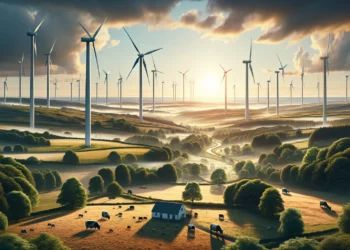Like many human inventions, wind turbines also come with an expiration date. They usually last up to 25 years and after that, they become a serious headache.
A turbine blade cannot be recycled because of its size; therefore, it is cut down into pieces and sent to wind turbine graveyards, like the ones in Texas and Wyoming. At these sites, thousands of turbine blades are just lying there out in the Sun like a massive pile of waste, and that pile keeps on growing every year.
However, a team of architects from Netherlands-based Superuse Studios has figured out a way to put this waste to some good use. They are making 100 percent safe and kid-friendly playgrounds out of decommissioned turbine blades. Superuse has been creating sustainable urban furniture designs out of different types of waste products since 1997.

To date, Superuse’s subsidiary Blade Made has already turned 27 old turbine blades into playgrounds, artwork, signposts, and various other functional designs (as per the data mentioned on Blade Made’s official website).
A playful way to deal with win turbine waste
The architects at Superuse realized the turbine waste problem in the 2000s. They noticed that most of these gigantic blades were either ending up in landfills or were being incinerated. In both cases, they were becoming a source of pollution. Plus, more and more countries were setting-up new wind turbines to meet their clean energy goals. Therefore, the turbine waste problem was likely to get bigger with time.
Their observations stand valid even today because in the US alone there are over 70,000 wind turbines already in action. Many of these wind turbines will be decommissioned in the coming years. Moreover, recently US president Joe Biden revealed his government’s plan to add 30 gigawatts of wind energy to the grid.
This means more and more turbines will be installed. Plus, the sizes of the turbines are also going from big to bigger to achieve high energy production. Who’s going to reuse all these new and old installations after 20 to 25 years when they will be decommissioned?
“Global wind energy generation grew 517% in the past ten years, bringing public attention to the growing challenge of end-of-life (EOL) blades made of glass/carbon fiber reinforced plastics (GRP). These still difficult-to-recycle poly-composite blades exist worldwide and require a solution that can also be adopted worldwide,” the Blade Made team note.
To deal with such waste, the folks at Superuse came up with the idea of turning wind turbine waste into useful urban furniture such as playgrounds. In 2009, they tested this idea in Rotterdam, Netherlands, where they created a 1200-square-meter play area out of an old wind turbine. The playground named Wikado has slides, tunnels, climbing walls, and various other elements that kids enjoy.

Wikado turned out to be a success. Superuse has been making play areas out of decommissioned wind turbines for 14 years now. In 2021, they opened a separate company called Blade Made to deal with all the turbine waste-related projects. Today, the architects at Blade Made also make bus shelters, signposts, and even bridges out of wind turbine waste.
The company has joined hands with some US and European companies to set up their unique urban furniture designs outside the Netherlands. In 2023, they plan to set up a turbine-made playground in the US as well. Hopefully, in the coming years, this unique approach will reach other parts of the world too.






